Solitaires Team
Classic Solitaire refers to Klondike Solitaire, and for many people, the term “Solitaire” is simply synonymous with Klondike. There are, though, many different types of Solitaire. Today, we will mostly be focussing on the classic Solitaire so let’s dive right into it.
Klondike Solitaire, and most forms of the game, feature tableau piles, a stockpile, a waste pile, and foundation piles.
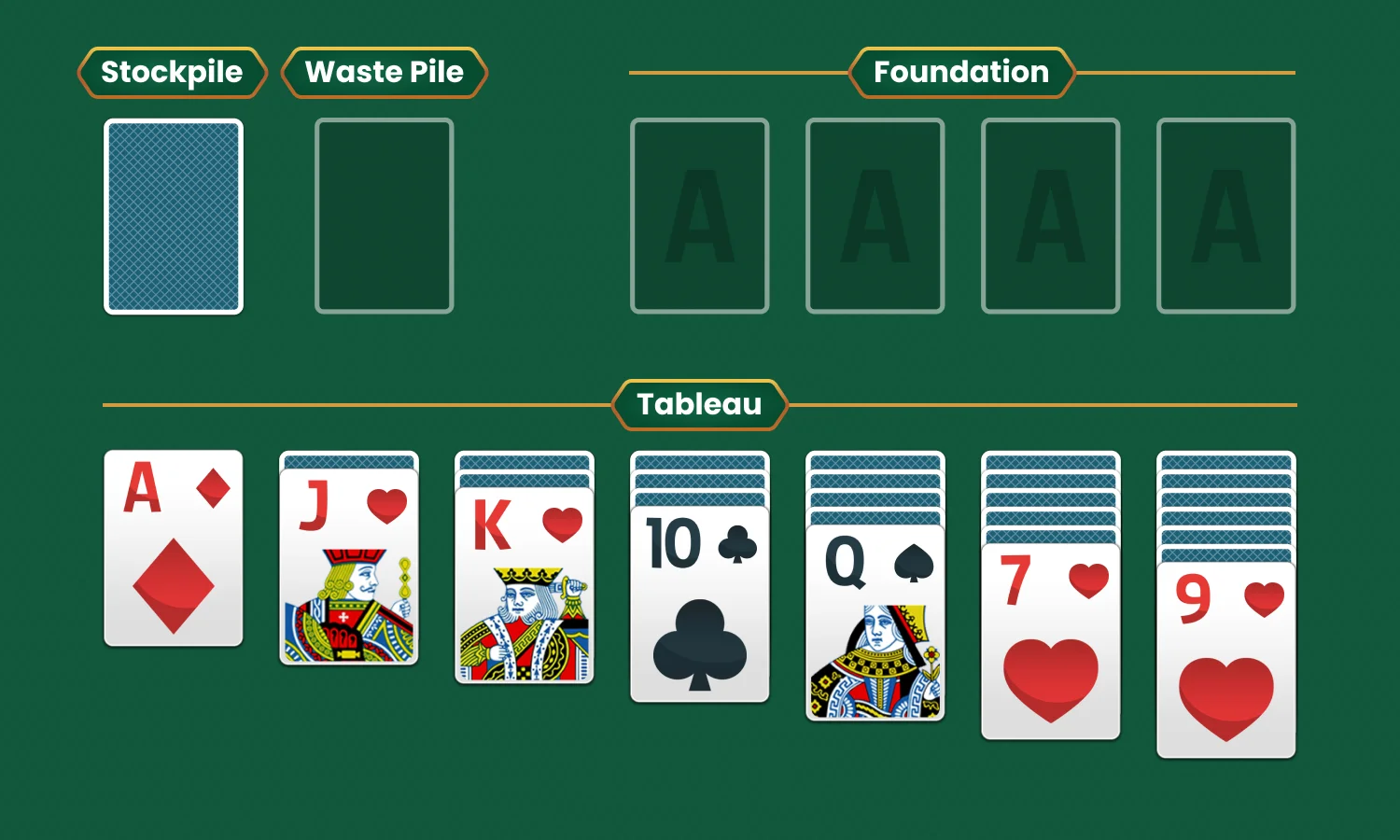
The aim of the game is simple: with a standard deck of 52 cards, you must arrange all cards into the foundations starting from ace and ascending up in value for each suit. So, shuffle the deck, and let's get to the Solitaire set up.
Start by dealing the first card face up to the left side. Next, deal six additional cards face down in a line to the right of the initial card.
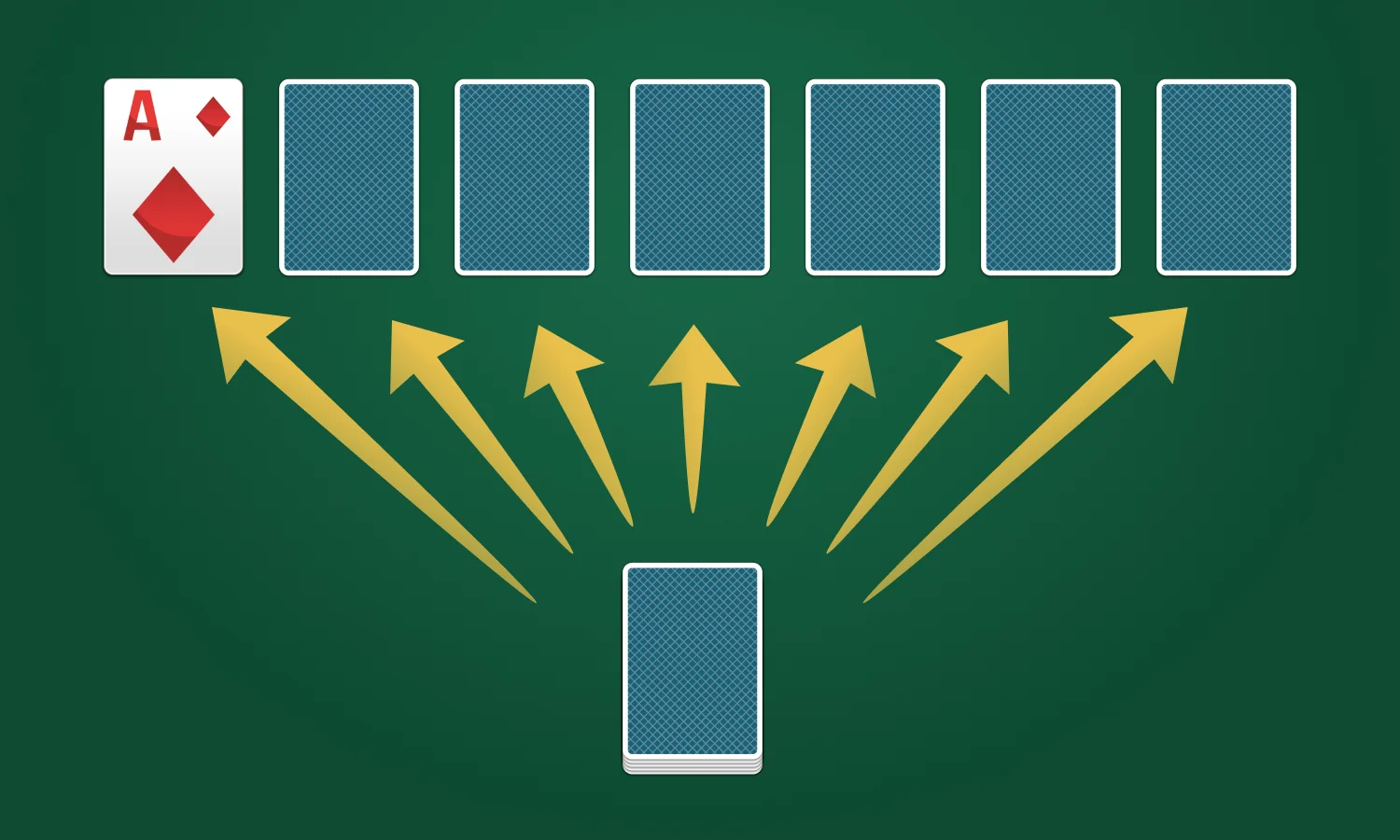
Then, place one card face up on the second pile and proceed to distribute five additional cards face down to the right, one atop each of the subsequent five stacks.
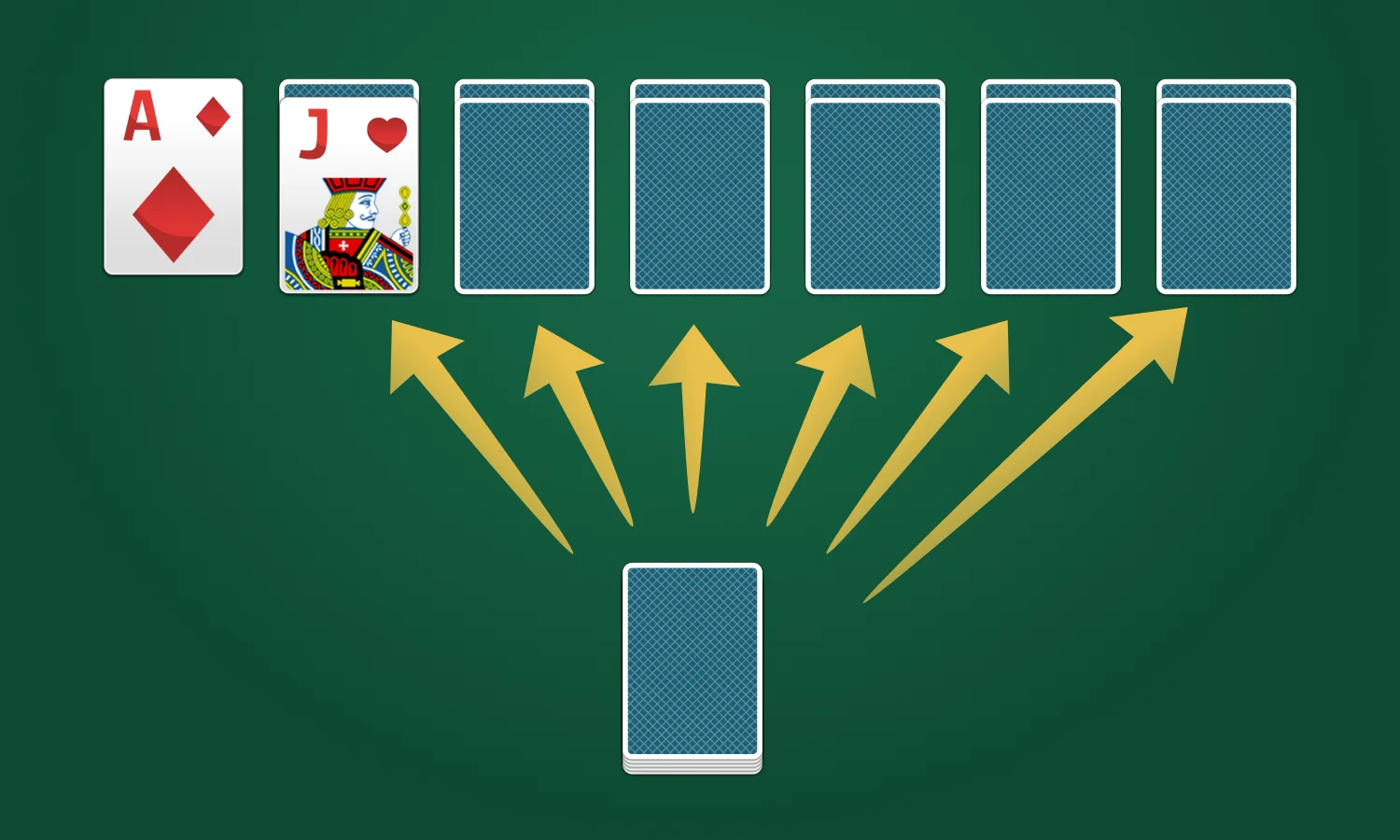
Continue this pattern until each pile has a face-up card on top, and the piles increase in size from one card on the far left to seven cards on the far right.
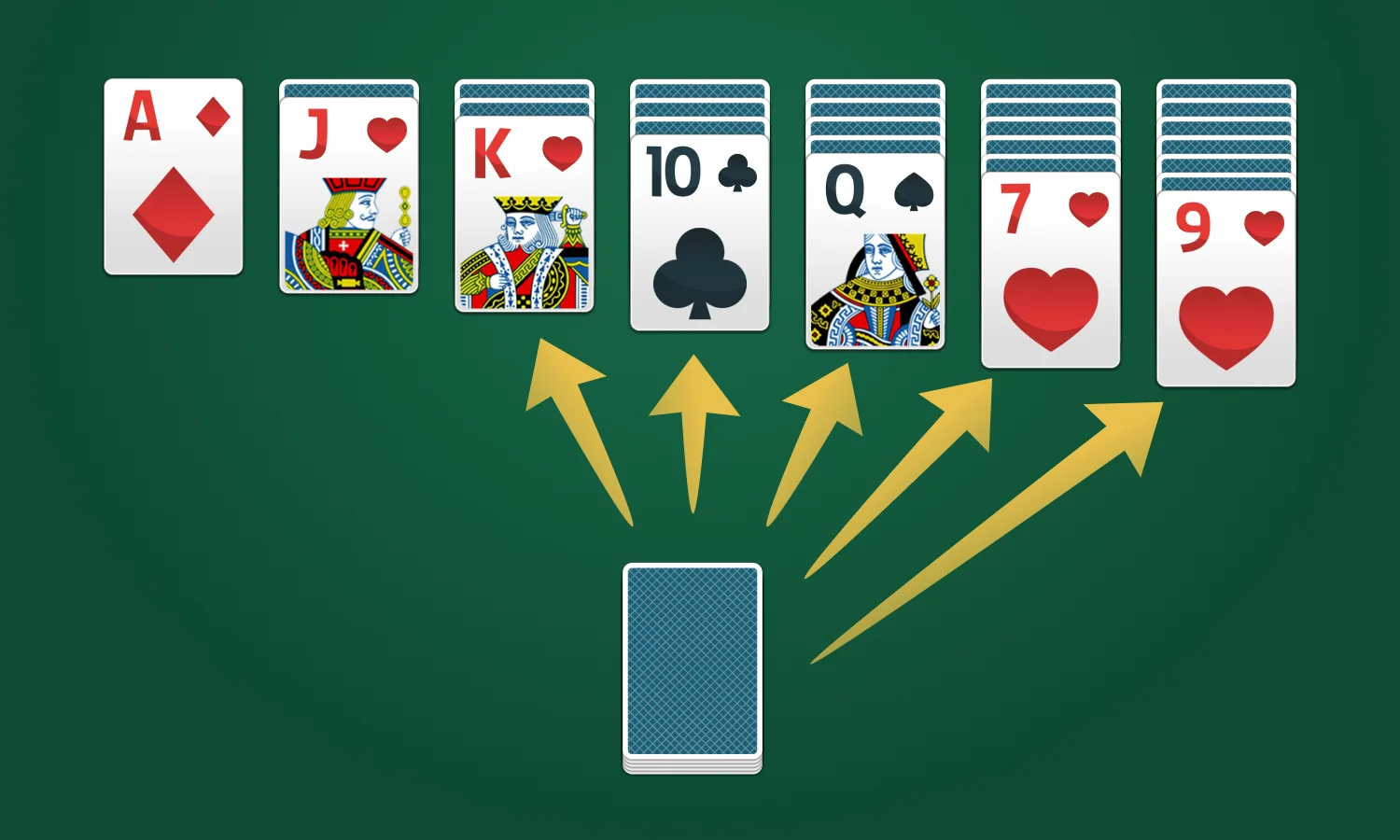
The remaining cards in the deck are dealt to the stockpile, which is usually placed face down in the top left corner.
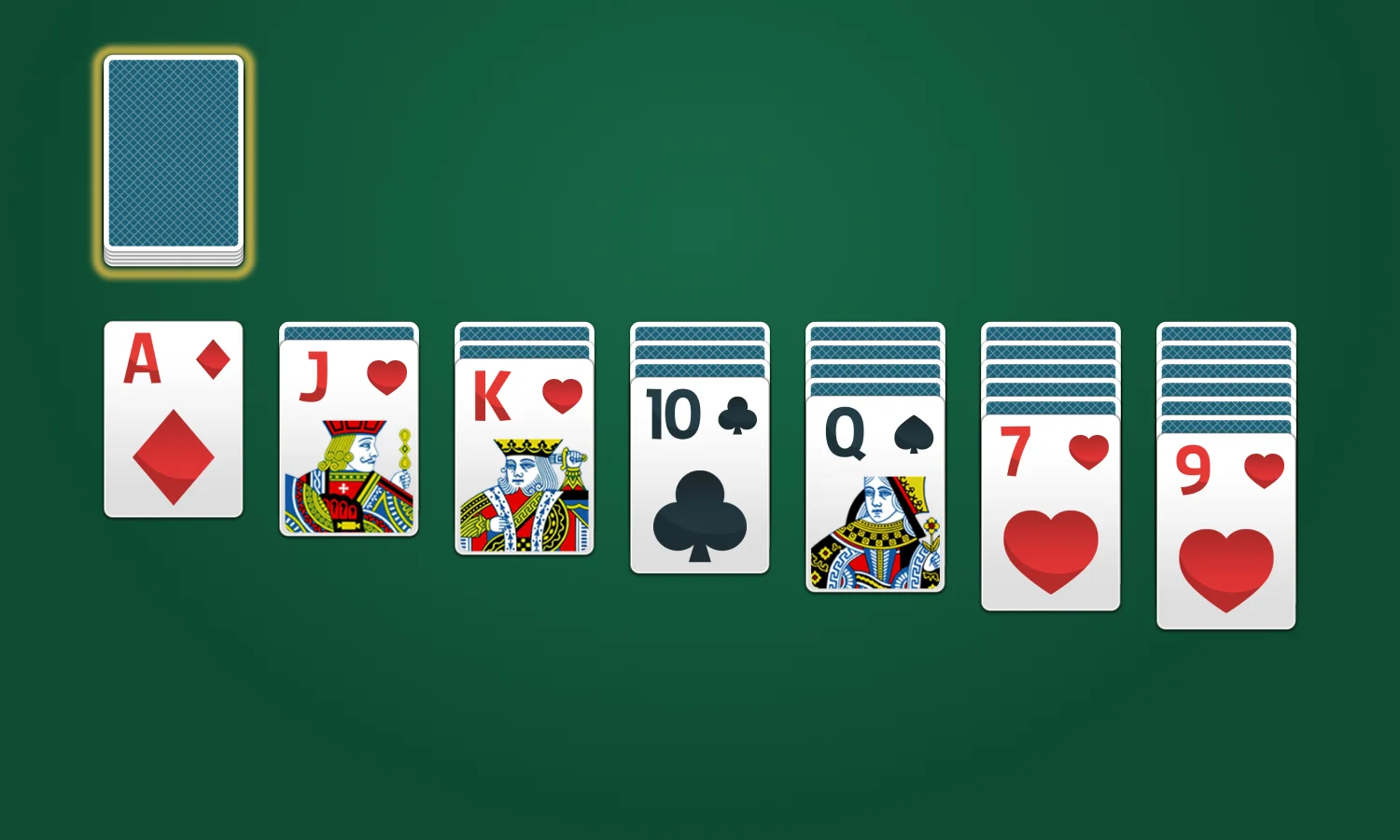
This space is initially empty but will hold cards from the stock that are turned over but not immediately used in the tableau or moved to a foundation.
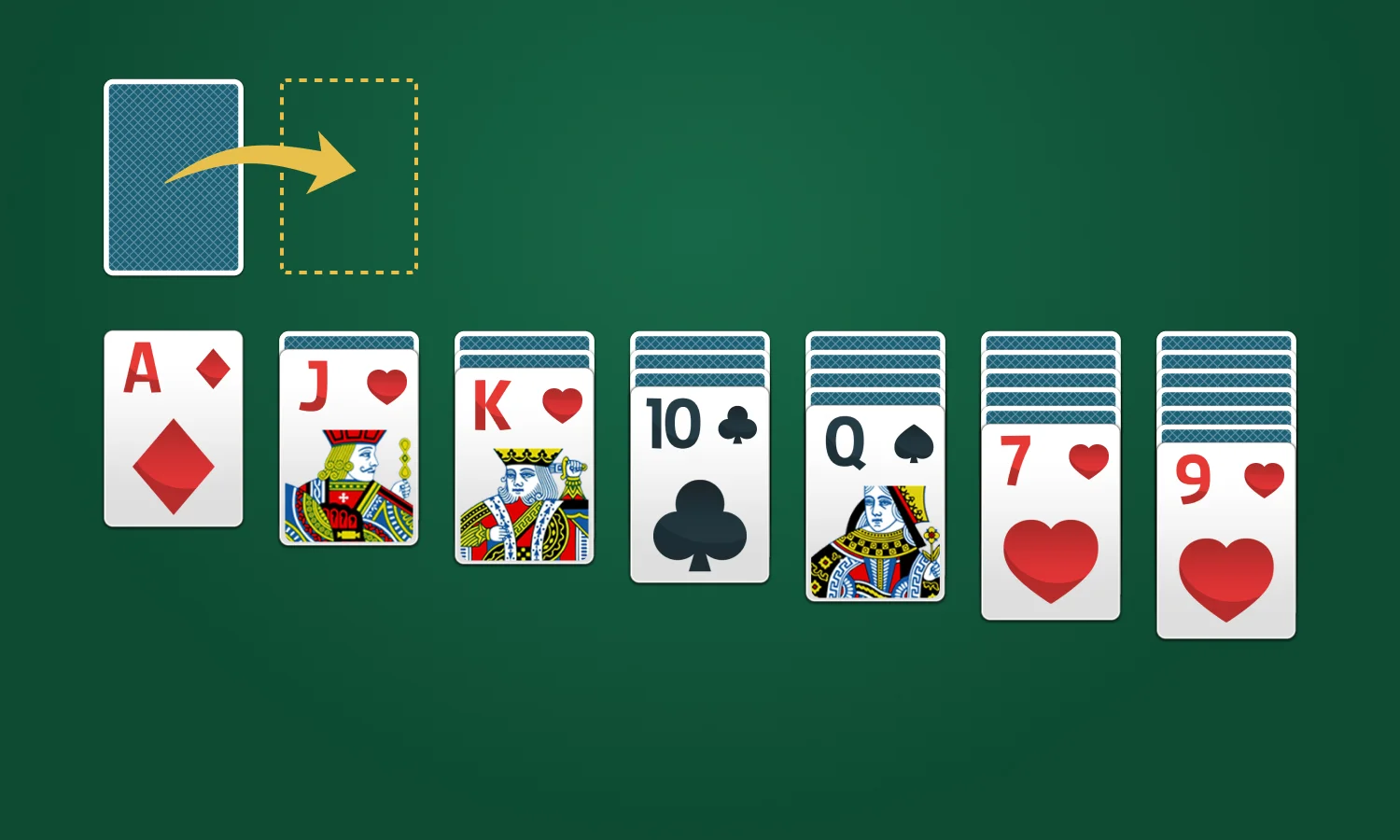
In the upper right corner, create a space for four foundation piles. These piles are not initially set up with any cards but will be built up during the game in ascending order (ace to king) by suit.
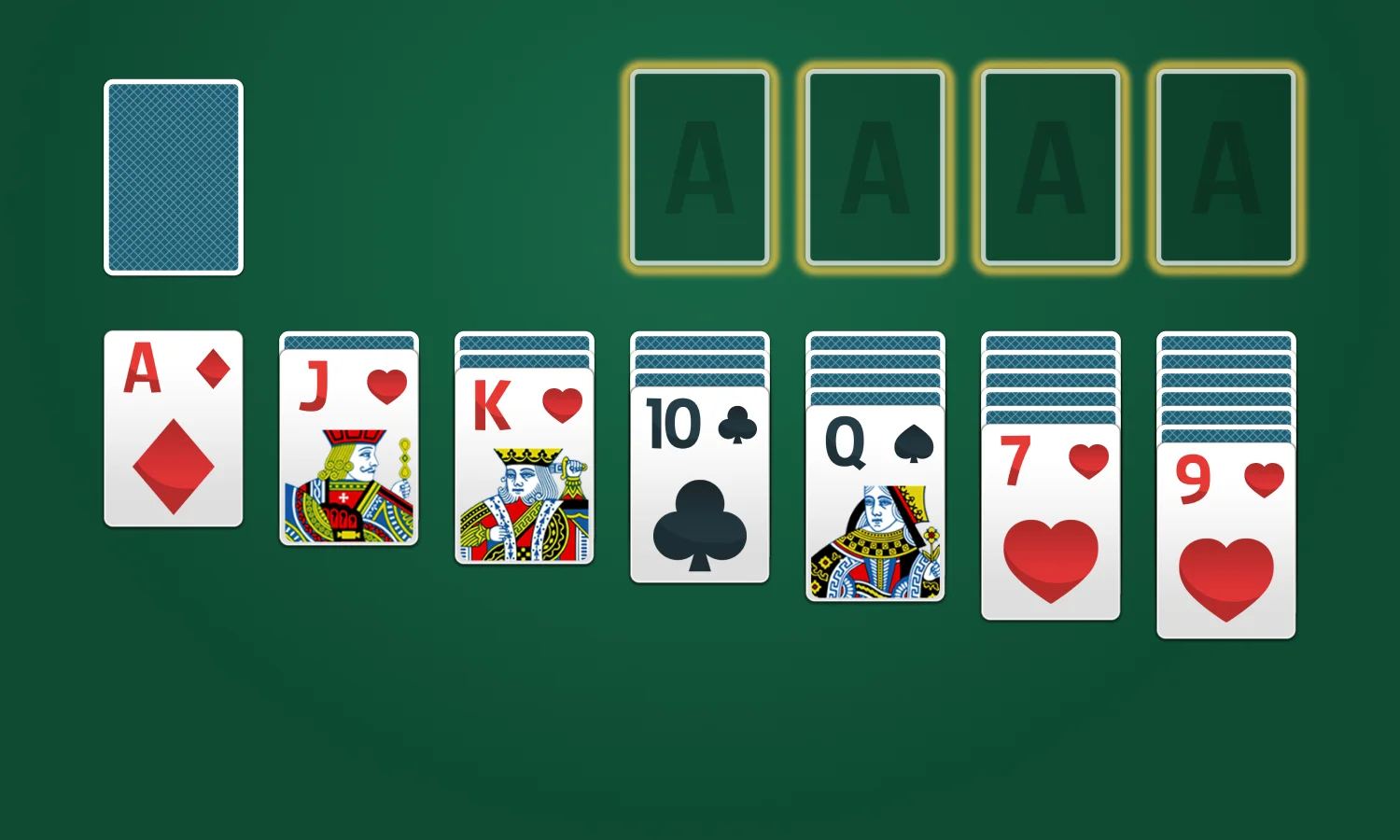
Now that you know how to set up Solitaire you can begin the game. The Solitaire rules are very simple and yet you can play it for hours without getting bored with the game.
Keep in mind, it's not possible to win every Solitaire game. It often requires both strategy and luck to successfully clear the tableau and fill the foundations.
Now that you have learned how to set up Solitaire and its basic rules, why not join the millions of fans of this fascinating game? Start playing the classic Solitaire game or try its different variations right now.